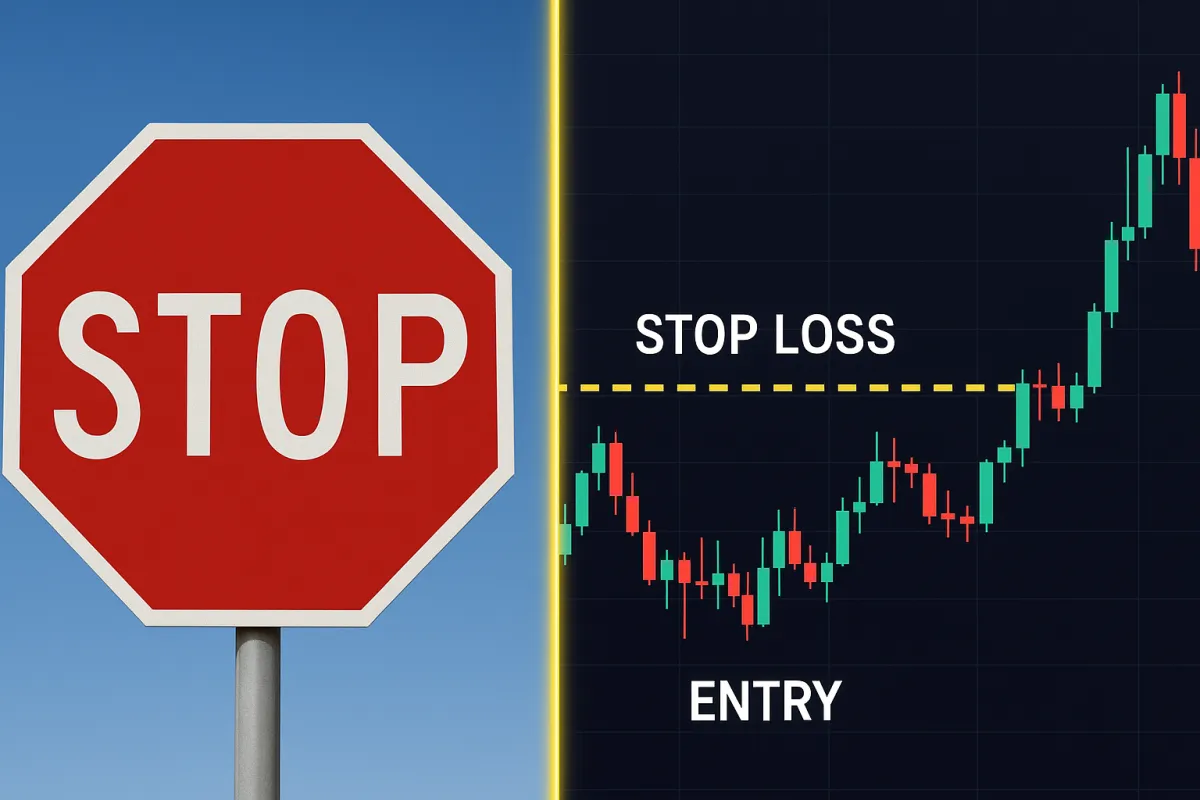
Why You Need a Pre-Defined Stop (and How to Set It)
Most traders focus on entries and targets but ignore the middle, the place where risk lives. That’s a mistake. Not having a pre-defined stop is gambling, not trading. A stop is not just a safety net; it’s part of your strategy. It protects your capital, your mindset, and your ability to stay in the game long enough to grow. When you plan a trade, think of the stop as the anchor that keeps your strategy grounded. It defines your maximum acceptable loss before emotion can take over and helps ensure you can trade again tomorrow even if this position fails. Over time, this discipline compounds by protecting your account from ruin, sharpening your analysis, and freeing mental bandwidth so you can focus on execution instead of survival.
Why Stops Matter
The best traders in the world think about risk before reward. They know that if you can’t define your downside, your upside doesn’t matter. Every trade carries uncertainty, no matter how good the setup looks. A stop-loss defines where you are wrong and limits how much you can lose when that happens. Without it, small mistakes can turn into major drawdowns. Experienced traders also understand that stops give them more freedom, not less, because they remove the fear of being trapped in an uncontrolled move. Knowing your stop is in place lets you commit fully to the trade without hesitation, allowing better focus on execution and follow-through.
Stops also protect your emotional capital. Once you set it, the decision is made. You don’t have to second-guess or panic when price moves against you. It removes stress and lets you trade your plan instead of your emotions. This emotional discipline compounds over time, building the kind of calm consistency that separates professional traders from those constantly reacting to every tick. When your stop is planned and respected, your decisions improve, your learning accelerates, and your confidence grows with each well-managed trade.
Where Most Traders Go Wrong
New traders often set stops based on how much money they feel comfortable losing instead of where the market structure says the trade is wrong. Others avoid stops altogether, hoping price will turn around. That approach might work once or twice, but over time it guarantees ruin. The market doesn’t reward hope; it rewards discipline. To trade professionally, you have to think in probabilities and structure, not feelings. The stop must be where your original trade idea is no longer valid, where market action proves you wrong, not just where you feel discomfort. Setting stops this way turns losses into useful feedback instead of emotional pain, because each one reinforces that your system is working as designed.
Another mistake is setting stops too tight. If your stop is inside the normal noise of price movement, you’ll get shaken out even when your setup is valid. Instead of allowing the trade space to play out, you end up donating small losses repeatedly, mistaking volatility for invalidation. A properly placed stop considers volatility, structure, and time frame. The goal is not to avoid every small loss. It is to stay alive for the big wins that follow the plan and to give your setups the room they need to unfold naturally without emotional interference.
How I Set My Stops
I start with structure. Every chart tells a story, and the stop belongs at the point where that story breaks.
Swing highs and lows: For bullish trades, my stop goes just below the most recent swing low. For bearish trades, just above the swing high.
VWAP and key levels: I use anchored VWAP to identify zones where institutions are likely defending positions. If price breaks that level, it’s a sign that control has shifted.
ATR multiples: I use the Average True Range to account for volatility. A stop one to one and a half times the ATR away from entry gives the trade room to breathe without being reckless.
Before I enter, I calculate position size so the dollar risk of that stop fits within my rules, usually no more than one percent of account equity per trade. That way, I can take multiple trades and still sleep well at night.
How to Avoid Being Shaken Out Early
Even the best stop can fail if you manage it emotionally. The key is to trust your placement. Don’t move it tighter just because the trade is taking longer than expected or because you feel nervous watching small fluctuations. Give the setup time to breathe, and remember that the stop was chosen for a reason. Only adjust your stop when the market gives you a technical reason such as a new swing point forming, a clear shift in structure, or volatility expanding in a way that changes the chart’s story. This approach requires patience and faith in your preparation.
Trailing stops can help protect gains once a trade moves in your favor, but they should follow logic, not fear. For example, I might trail under higher lows in an uptrend or behind VWAP as price extends. As momentum builds, I sometimes widen the trail slightly to avoid premature exits, allowing the trend to mature while still keeping profits protected. A thoughtful trailing stop should move strategically with the market’s rhythm rather than reacting emotionally to every uptick or downtick.
The Mindset Behind Good Stops
Stops are not about fear; they are about control. You can’t control what the market does, but you can control how much you lose. Every great trader accepts small losses as part of the game. What they don’t accept is losing discipline. If you treat every trade as a lesson in risk management, consistency follows.
Final Word
Trading without a stop is like driving without brakes. You might be fine for a while, but eventually something unexpected will happen. The traders who last are the ones who define their exits before they enter. Set your stops based on structure, not emotion, and you’ll turn uncertainty into strategy. If you want to learn how to apply these risk rules in your own trades, join the free bootcamp where I teach practical methods for setting stops, managing risk, and building consistency in every market condition.



